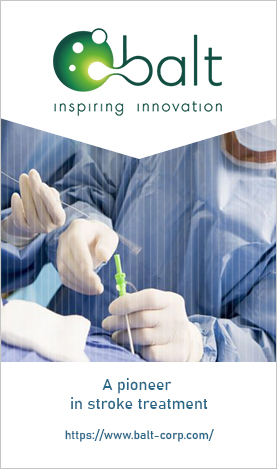A MULTIDISCIPLINARY APPROACH TO TREATMENT OF HIGH FLOW HEAD AND NECK ARTERIOVENOUS MALFORMATIONS: SINGLE CENTRE EXPERIENCE IN 7 COMPLEX CASES
Multidisciplinary Approach in Head and Neck AVMs
DOI:
https://doi.org/10.32896/cvns.v4n2.1-15Keywords:
Arteriovenous Malformation, Embolization, High Flow, Multidisciplinary, Plastic SurgeryAbstract
Introduction: The objective of this work is to determine the role of a multidisciplinary approach in treating the complex high flow head and neck arteriovenous malformations (AVMs), involving radiologists and plastic surgeons for the best possible outcomes.
Methods: Between 2018 and 2020, the investigators conducted a retrospective analysis on seven patients with high-flow head and neck AVMs who received treatment at a tertiary care facility. Age at first diagnosis, presenting features, prior therapies, endovascular treatment, surgical treatment, and therapeutic outcomes were all recorded. A comparison of pre-and post-procedure pictures was made to assess the clinical outcomes for all patients.
Results: Seven patients with complex high flow head and neck AVMs were jointly managed by performing plastic surgery and interventional radiology. There were male and female, with an average age of 24 years. Each patient underwent embolization followed by surgical resection within a 24-hour window of up to 72 hours. In six out of seven patients, the lesion was removed therapeutically, whereas the seventh required palliative resection. Only one patient, there was a minor wound healing difficulty able to be treated with dressings.
Conclusion: The results revealed that embolization alone is not effective to reduce the adverse effects. Incomplete removal of AVM showed the same effect as incomplete removal of a tumour. It may not improve symptoms and may worsen the recurrence, thus multi-modality approach is beneficial. A multidisciplinary approach, aided by the interventional radiologist and enable plastic surgeons to remove the high-flow AVMs effectively.
References
Clarençon F, Blanc R, Lin CJ, Mounayer C, Galatoire O, Morax S, Moret J, Piotin M. Combined endovascular and surgical approach for the treatment of palpebral arteriovenous malformations: experience of a single center. AJNR Am. J. Neuroradiol. 2012 Jan;33(1):148-53.
Kilani MS, Lepennec V, Petit P, Magalon G, Casanova D, Bartoli JM, Vidal V. Embolization of peripheral high-flow arteriovenous malformations with Onyx. Diagn. Interv. Imaging. 2017 Mar;98(3):217-26.
Pekkola J, Lappalainen K, Vuola P, Klockars T, Salminen P, Pitkäranta A. Head and neck arteriovenous malformations: results of ethanol sclerotherapy. AJNR Am. J. Neuroradiol. 2013 Jan;34(1):198-204.
Erdmann MW, Jackson JE, Davies DM, Allison DJ. Multidisciplinary approach to the management of head and neck arteriovenous malformations. Ann R Coll Surg Engl. 1995 Jan;77(1):53.
Churojana A, Chiewwit P, Chuangsuwanich A, Aojanepong C, Chawalaparit O, Suthipongchai S. Embolization of vascular malformations in head and neck regions: a single center experience. Interv Neuroradiol. 2004 Mar;10(1):37-46.
Dmytriw AA, Ter Brugge KG, Krings T, Agid R. Endovascular treatment of head and neck arteriovenous malformations. Neuroradiology. 2014 Mar;56(3):227-36.
Case D, Folzenlogen Z, Rochon P, Kumpe D, Roark C, Seinfeld J. Embolization of head and neck vascular malformations using serial arterial embolization followed by dominant arterial embolization with two microcatheter technique. J. vasc. interv. neurol. 2018 Nov;10(2):47.
Dieng PA, Ba PS, Gaye M, Diatta S, Diop MS, Sene E, Ciss AG, Ndiaye A, Ndiaye M. Giant arteriovenous malformation of the neck. Case Rep Vasc Med. 2015 Aug;2015.
Ou CH, Wong HF, Yang MS, Yang TH, Ho TL. Percutaneous direct puncture embolization for superficial craniofacial arteriovenous malformation. Interv Neuroradiol. 2008 Nov;14(2_suppl):19-22.
Panda N, Thakur P, Sharma R, Biswas G, Verma R, Khandelwal N. Management of head and neck arteriovenous malformations–team work counts. J Oto Rec Surg. 2016 Jun 30;2(1):114.
Oliveira C, Donato H, da Silva FP, Agostinho AG, Carvalheiro V. Long-term Outcome of Embolization of Extracranial Arteriovenous Malformations of the Head and Neck. ARP. 2015 Nov;27:17-22.
Rosenberg TL, Suen JY, Richter GT. Arteriovenous malformations of the head and neck. Otolaryngol. Clin. North Am. 2018 Feb;51(1):185-95.
Downloads
Published
How to Cite
Issue
Section
License

This work is licensed under a Creative Commons Attribution-ShareAlike 4.0 International License.







